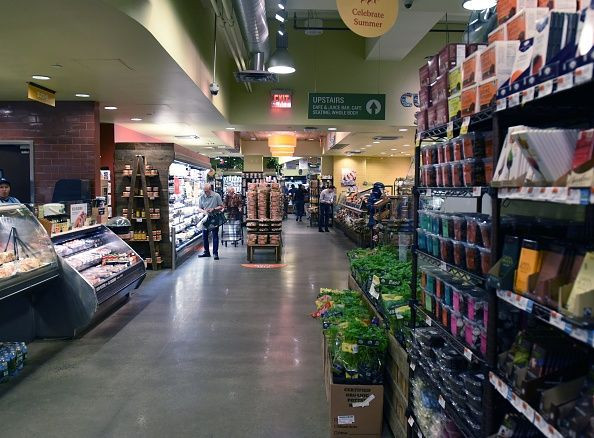Amazon Says It Won't Open Any More Whole Foods 365 Locations

Before Amazon (NASDAQ:AMZN) bought Whole Foods Market, the chain had earned a reputation for high prices. It hasn't entirely shed that style under its new owners; according to a Morgan Stanley analysis last summer, overall regular prices at the chain were only about 2% lower a year after the acquisition -- and about 13% more than its competitors. But the "Whole Paycheck" reputation has at least faded, and discounts offered to Prime members (and Amazon Visa card holders) further trim the price gap between the chain and its mainstream peers.
That, in turn, has reduced the need to promote and expand Whole Foods' 365 store concept. Those stores, which target a younger demographic, have fewer frills than a traditional Whole Foods -- think basic shelving, concrete floors, and a selection built around the chain's 365 house brand (hence the name).
A key goal for 365 was to win over a new wave of customers to the grocer's offerings, some of whom would eventually (it was hoped) upgrade to shopping at the main Whole Foods chain. But Amazon has concluded that -- in light of the price cuts it has already made, and the additional savings Prime members can get -- this strategy no longer makes sense. It has therefore decided to stop building new locations of the low-frills chain.
Why is Amazon stopping growth?
It's important to note that Amazon has significant expansion plans for Whole Foods chain; it's eyeing new locations with larger footprints that will include warehouse space to serve customers who order their groceries online for delivery.
Whole Foods CEO John Mackey explained the company's logic in an internal memo that has been published on a number of business news websites.
"As we have been consistently lowering prices in our Whole Foods Market stores over the past year, the price distinction between the two brands has become less relevant," wrote Mackey. "We believe that the price gap will further diminish."
The 365 locations are also smaller than a typical Whole Foods, and many are located in urban areas. That makes them less useful as delivery hubs for the grocery store's own products, or as full-serve Amazon shipping centers.
"I noticed rather quickly in the 365s I visited that other than some of the perimeter items, there wasn't a lot of difference between the two concepts," wrote WD Partners Executive Vice President Lee Peterson on RetailWire. "Yeah, the design was scaled down, but the center aisles were essentially the same product and price."
According to Amazon, the dozen 365 locations currently open will continue operating using that brand name.
Is this a failure?
The 365 chain was designed to counter the notion that Whole Foods' offerings were all too expensive for some shoppers. By exposing new customers to the company's wares and its house brand, it was hoped that the stores could function as a gateway to the parent chain. That's simply less necessary at a time when Amazon has been lowering prices there as well.
This isn't a failure of the 365 concept. In many ways, Amazon brought the 365 sensibility to the chain in its entirety. It might make sense for the existing 365 locations to feature the Whole Foods name more prominently or even adopt it entirely -- perhaps under a Whole Foods 365 or Whole Foods Express marque.
Amazon wants Whole Foods to be price competitive in its category (at least, for Prime members). This strategic change simply reflects the company's belief that the original chain has now become a viable shopping option for a broader customer base -- including people who might have been served instead by additional 365 locations.
This article originally appeared in the Motley Fool.
John Mackey, CEO of Whole Foods Market, an Amazon subsidiary, is a member of The Motley Fool's board of directors. Daniel B. Kline has no position in any of the stocks mentioned. The Motley Fool owns shares of and recommends Amazon. The Motley Fool has a disclosure policy.





















